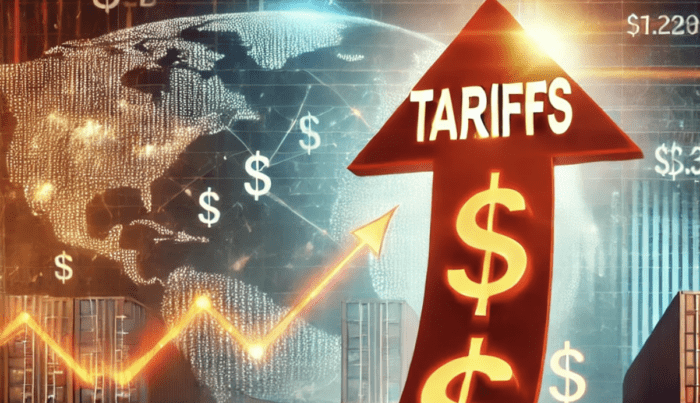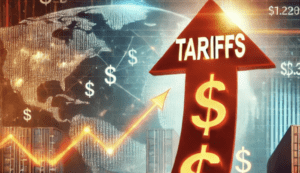An Introduction
The original article by Spencer Wright, an investment advisor representative with Halbert Wealth Management, Inc. and a contributor to Forecasts & Trends, is presented below with some very minor edits [ ] and (…) to ensure a fast and easy read.
The Reality of Tariffs
I could go on and on, but…[below are] the basics of why tariffs are counter-capitalistic and foolish:
- …Tariffs distort prices and undermine consumer sovereignty.
- Tariffs make imported goods more expensive, encouraging consumers to buy potentially less desirable domestically produced substitutes. This disrupts the market’s ability to reward competitive producers.
- Tariffs make imported goods more expensive, encouraging consumers to buy domestically produced substitutes, even if they’re inferior or cost more.
- Tariffs encourage retaliation and trade wars. Tariffs often provoke retaliatory measures from trading partners, escalating into mutually harmful trade conflicts. This creates a “lose-lose” scenario, reducing global trade volume and prosperity.
- Tariffs ignore the seen vs. unseen effects. Protecting a domestic sugar industry, for example, might save 1,000 jobs but raise food costs for millions of consumers and harm indigenous manufacturers.
- Tariffs also disrupt market driven innovations. In the 1980s pressure from Japanese auto manufacturers forced American auto manufacturers to innovate and produce a better product. Tariffs would have prevented this from occurring…
There is No Free Trade
…While many countries have made significant strides towards reducing trade barriers, there is no actual free trade. Below are 10 factors that prevent the realization of completely free trade:
- Tariffs and Quotas:
- Most countries still maintain some level of tariffs or quotas on certain imports. Even under the USMCA trade agreement, the NAFTA replacement that Trump negotiated in his first term, Canada maintains quotas on U.S. dairy products.
- Non-Tariff Barriers:
- Regulations, standards, and bureaucratic procedures can act as de facto trade barriers…[such as] differences in food safety standards between the EU and US.
- Subsidies:
- Government support for domestic industries (such as agricultural subsidies) can create unfair advantages in international markets.
- Currency Manipulation:
- Some nations are accused of artificially devaluing their currency to boost exports.
- Intellectual Property Issues:
- Disputes over patents, copyrights, and trademarks can impede free trade.
- Political Considerations:
- National security concerns or domestic political pressures often lead to trade restrictions such as, for example, U.S. restrictions on certain Chinese tech companies.
- Preferential Trade Agreements:
- While these reduce barriers among member countries, they can create disparities with non-members.
- Environmental and Labor Standards:
- Differences in regulations can create uneven playing fields for international competition.
- State-Owned Enterprises:
- Government-owned companies may receive unfair advantages in international markets.
- Digital Trade Barriers:
- Restrictions on data flows and digital services are emerging as new forms of trade barriers.
While world trade has become more free since World War II, true free trade remains an ideal rather than a reality. Most international trade operates under managed trade systems with varying degrees of openness.
This is Trump’s Plan
Big, beautiful tariffs are not a winning long-term economic strategy but that isn’t what Trump has in mind, hopefully….Trump isn’t out to wallop manufacturers or American consumers… Instead he wants to re-domicile as much manufacturing as possible. Why? For very good reasons. There is an economic concept called the manufacturing multiplier effect and below is how it breaks down:
- Supply Chain Impact:
- For every $1 spent in manufacturing, an estimated $1.82 is added to the economy through related activities.
- Manufacturers require raw materials, components, and services from other industries, stimulating demand across the supply chain.
- Job Creation:
- Manufacturing jobs support employment in other sectors like transportation, warehousing, and professional services.
- For every direct manufacturing job, an estimated 2.5 additional jobs are created in other sectors.
- Innovation Spillover:
- R&D in manufacturing often leads to innovations applicable in other industries.
- Advancements in manufacturing processes can improve efficiency across various sectors.
- Export Boost:
- Manufacturing accounts for a significant portion of U.S. exports, bringing in foreign currency and supporting jobs in trade-related services.
- Local Economic Support:
- Manufacturing facilities often become economic anchors in communities, supporting local businesses and services.
- Wage Effects:
- Manufacturing jobs typically offer higher wages, increasing consumer spending power which benefits retail, hospitality, and other service sectors.
- Technology Adoption:
- The manufacturing sector often leads in adopting new technologies, driving demand for IT services and high-tech products.
This multiplier effect underscores manufacturing’s role as a key driver of broader economic growth and development. Currently the U.S is the second largest manufacturing economy by output. Manufacturing accounts for about 11.3% of America’s GDP. This, I hope, is Trump’s plan: Only enacting short- to intermediate-term tariffs that, in the end, result in lower tariffs and trade barriers globally for the long term.
The Worst-Case Scenario
The worst-case scenario is that Trump believes the U.S. can tariff itself to prosperity. We can’t. No nation can. If this is the case, financial markets will continue in turmoil for the foreseeable future. This will derail his agenda and likely cost the GOP control of Congress in 2026.














